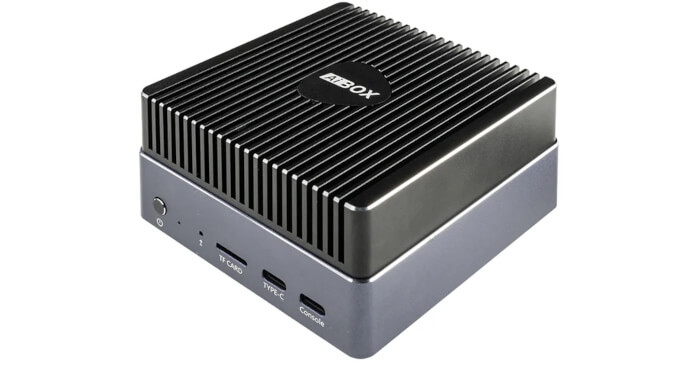Let’s interrogate the AIBOX-3588S with some familiar Linux tools.
The uname command is a utility that displays information about the current system

The system is running kernel 6.1.118 which was released in November 2024.
Processor
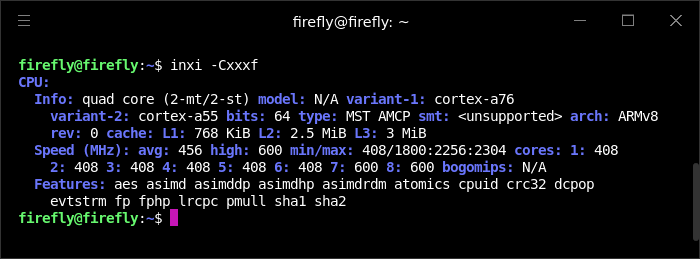
The Mini PC comes with the powerful Rockchip RK3588S 8-core 64-bit processor. In specification, it’s similar to the RK3588 but the RK3588S has a few reduced features:
- one TYPEC/DP1.4 less
- one HDMI 2.1 TX/eDP1.4 less
- No HDMI RX
- three PCIE less(2x PCIE3.0 + 1x PCIE2.0), one SATA less
- one MIPI CSI less(1x4Lane or 2×2 Lane)
- one GMAC less(VCCIO3 Domain)
The CPU is identified as:
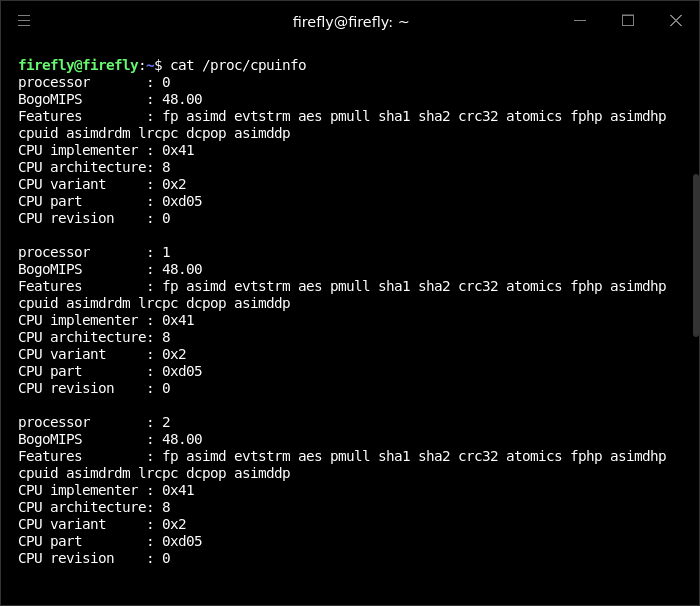
I’m only showing some of the processors.
Graphics
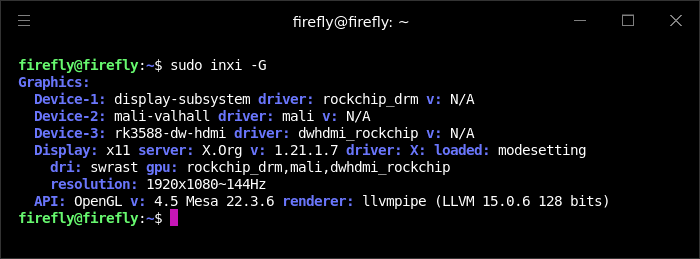
The machine has the ARM Mali-G10 MP4 graphics. The machine is equipped with a single HDMI output port.
Here’s some benchmarks using glmark2 showing the OpenGL ES performance of the GPU. I’ll cover benchmarks in more detail in the next article in the series.
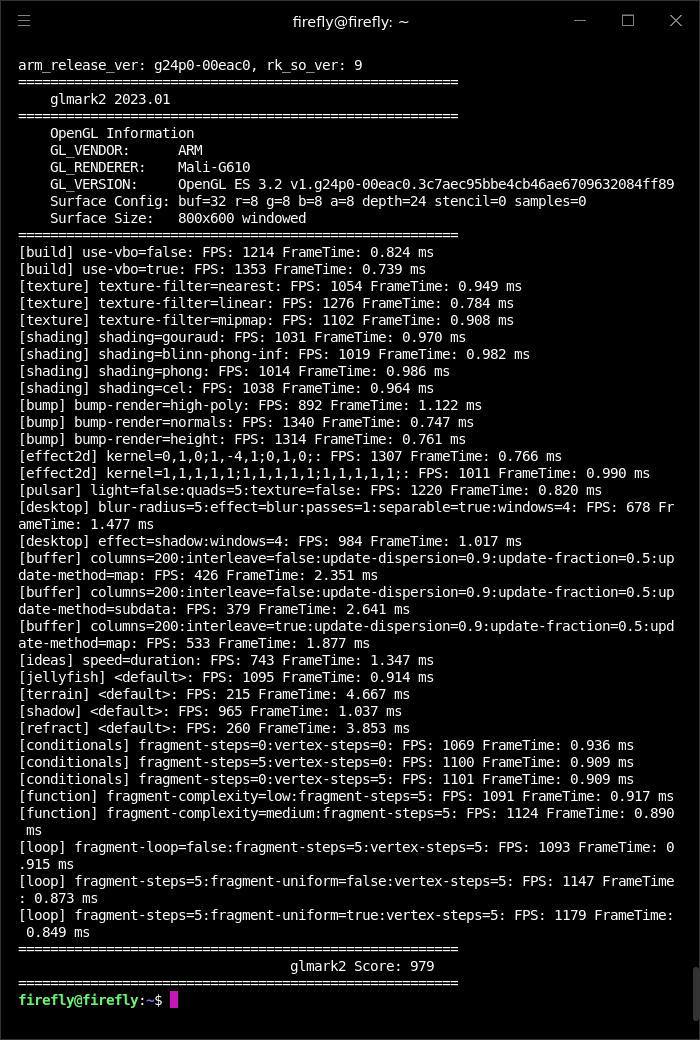
And here’s the GPU acceleration available in Chromium. There are lots of features with hardware acceleration.
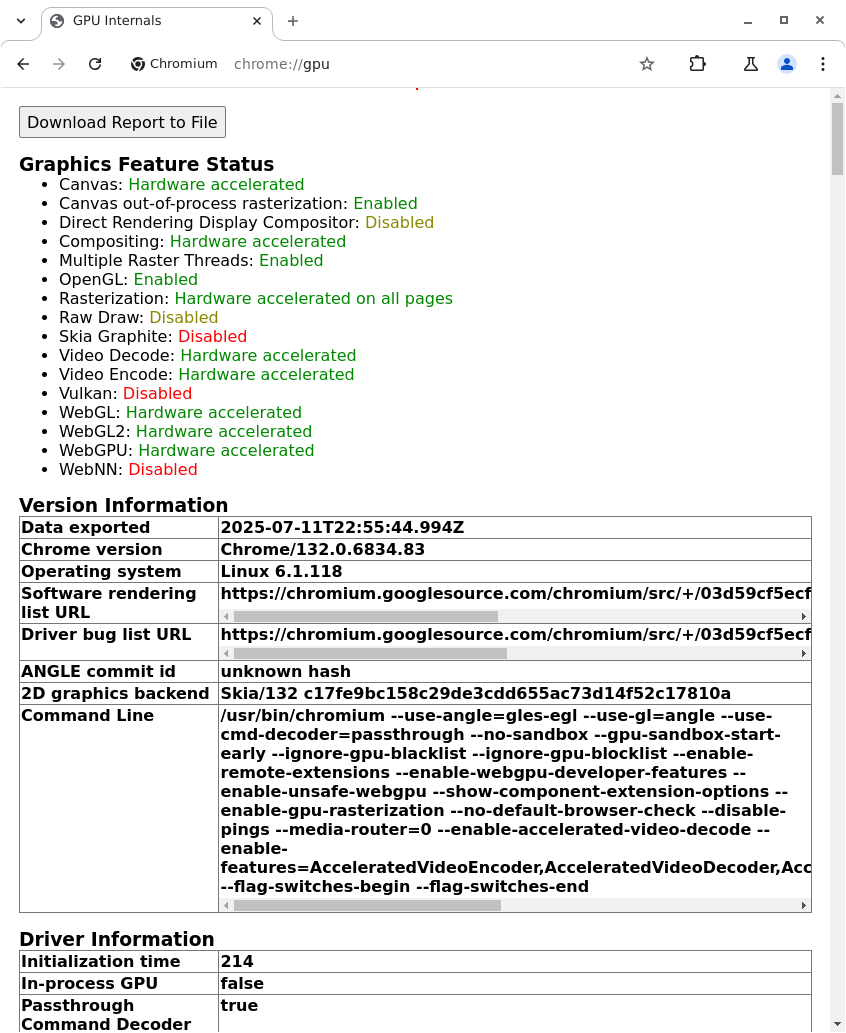
There’s support for hardware decoding:
8K@60fps H.265/VP9/AVS2
8K@30fps H.264/AVC/MVC
4L@60fps AVI
1080P@60fps MPEG-2/-1/VC-1/VP8
And for hardware encoding:
8K@30fps H.265/H.264
Disk
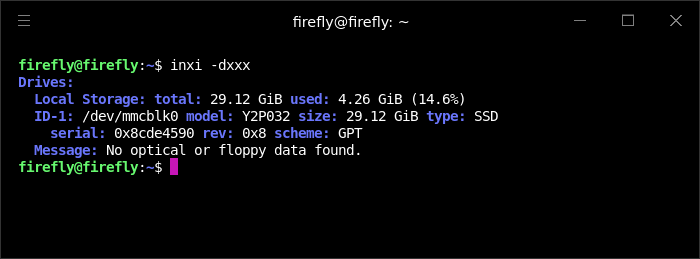
The eMMC provided with my machine is 32GB. Other configurations are available with 16GB, 64GB, 128GB or 256GB.

Here’s a benchmark test for the eMMC. As you’d expect, performance is much better than a microSD card.
Memory

My machine has 16GB of DDR5 RAM. It’ll be interesting to see what performance is like in RAM benchmarks. The datasheet lists alternative configurations: 4GB, 8GB, or 32GB RAM.
Audio
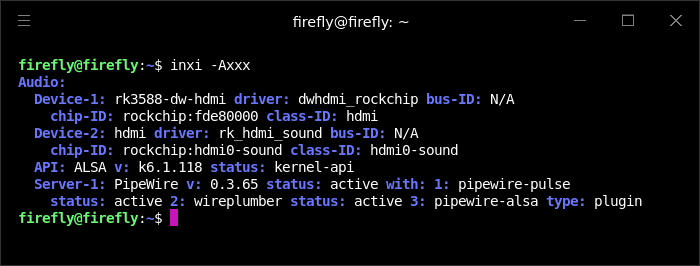
Audio is passed through HDMI. The machine does not have Bluetooth.
But a fanless machine is always a candidate for consuming multimedia, so I added a cheap Bluetooth USB adapter which works without needing any drivers/modules.

Network
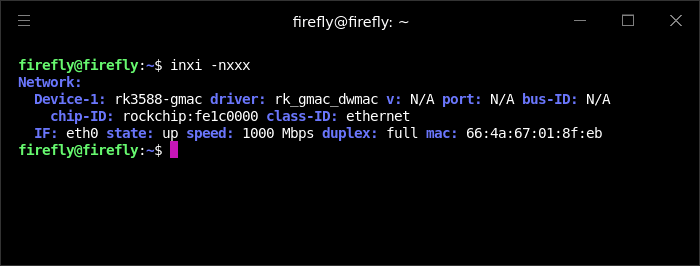
The machine has a single gigabit ethernet port.
There’s no WiFi available.
Temperature

This temperature reading was taken with a room temperature of 27.6°C. The machine was left idle for 60 minutes before taking this reading. Let’s see how the case keeps the CPU temperature when stressed using s-tui and stress. With only passive cooling from the case, the temperature gets a bit toasty on this very hot day (by UK’s norm).
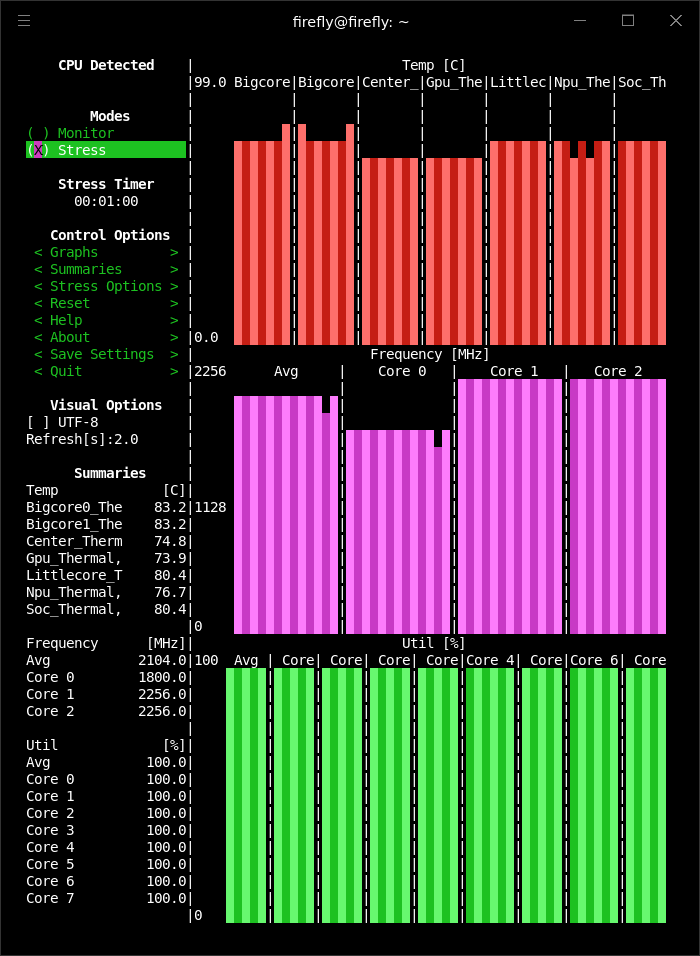
In the next article in the series I will run a range of benchmarks on the machine.
Pages in this article:
Page 1 – Introduction / Design
Page 2 – Getting Started
Page 3 – Interrogation of the system
All articles in the series:
| Firefly AIBOX-3588S | |
|---|---|
| Introduction | Introduction to the series and interrogation of the AIBOX-3588S |
| Benchmarks | Benchmarking the AIBOX-3588S Embedded Fanless PC |
| Power | Comparing the AIBOX-3588S power consumption with other SBCs and Mini PCs |
| SSHFS | Access Remote File Systems Over SSH with SSHFS |
| Flatpak | Set up Flatpak to use external disk |
